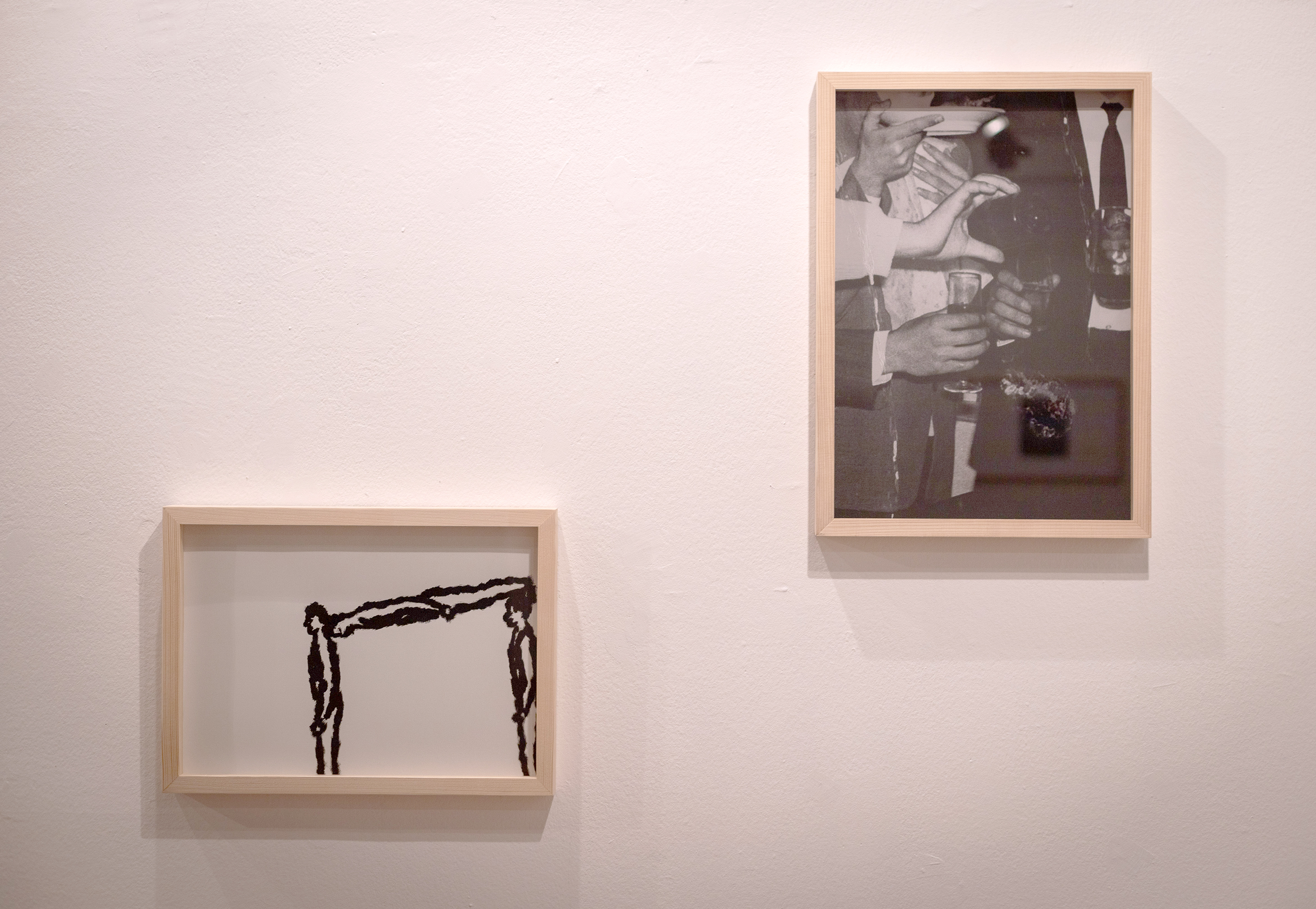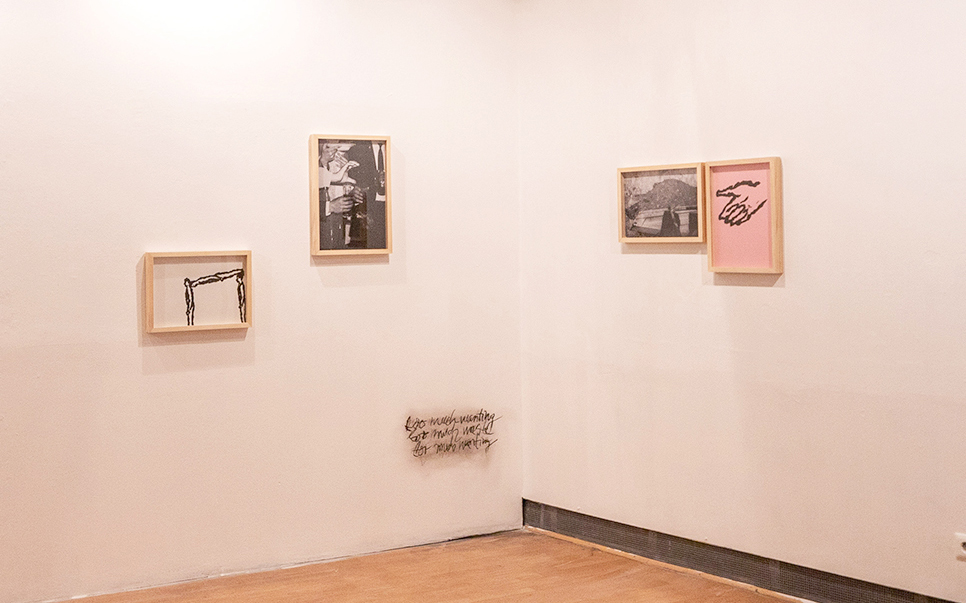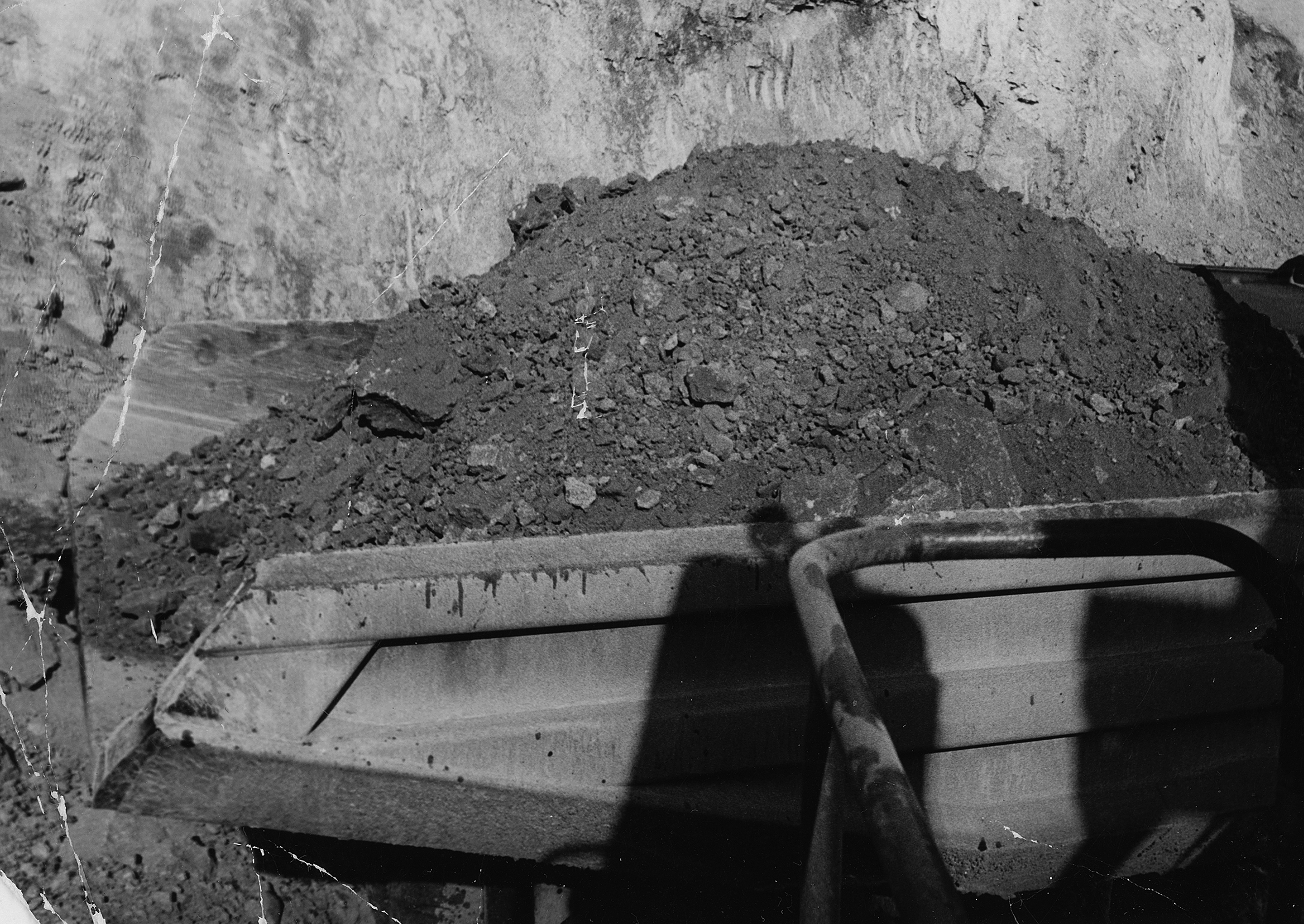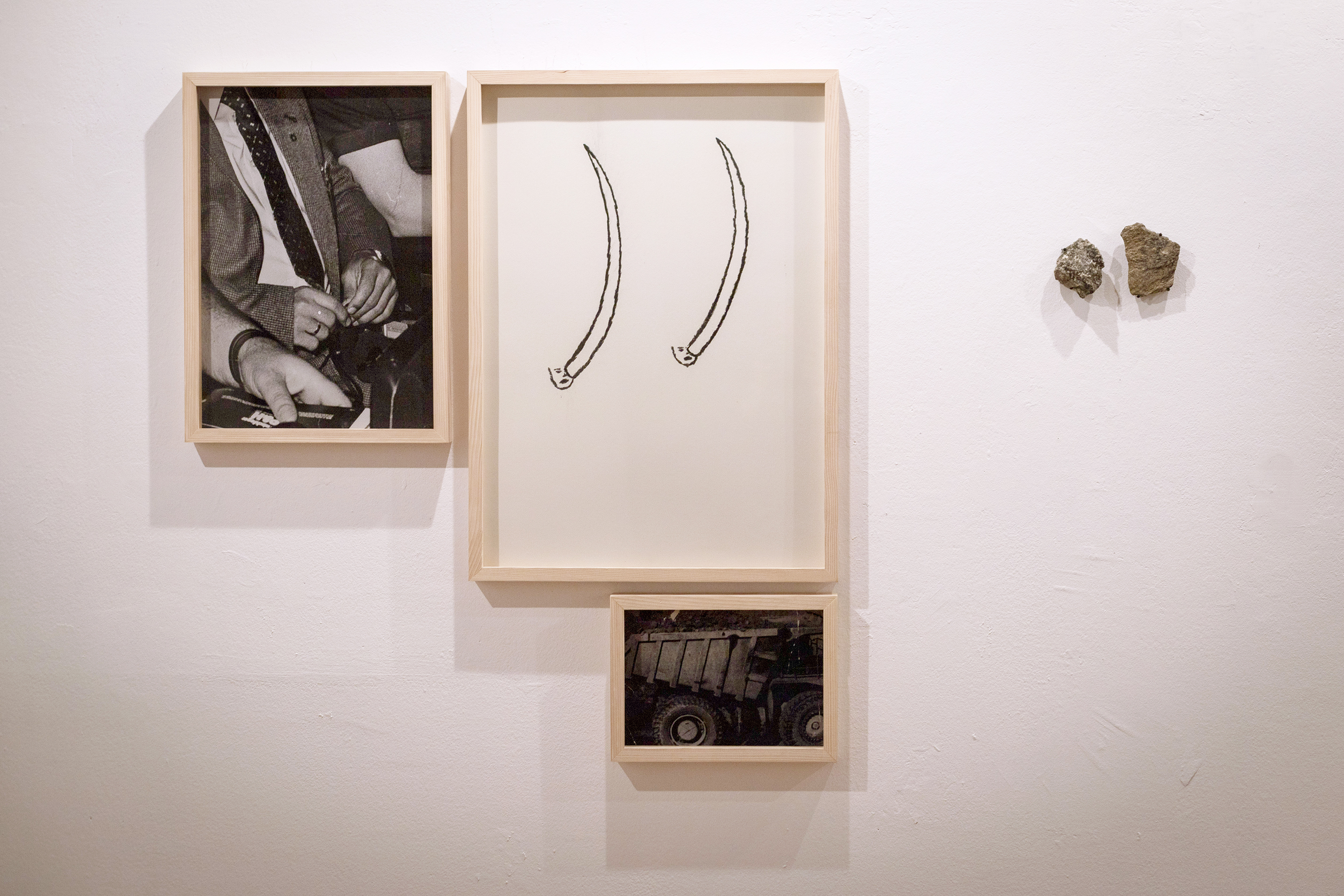Group exhibition
Multimedia Center “Mala Stanica”
(The National Gallery of North Macedonia)
Jordan Mijalkov 18
Skopje, North Macedonia
24/10/2024 — 04/11/2024
Curator: Jana Stardelova
Photographer: Jelena Belikj
Through the
series of works presented at this exhibition I am dealing with the particular
connection of my family, especially my father, with the mining industry,
specifically copper and gold mine in my hometown Bor (Serbia) – the main reason
why my whole family has emigrated from North Macedonia to Serbia shortly after
World War II. By using archival photos from the period of my father’s employment
at the mining company, drawings on paper and found objects I aim to create intimate
commentary on the issues of family history, complex web of relationships that
have shaped my identity as well as the questions of the impact of resource
extraction on both the environment and community.
....................................................
Excerpt from the exhitibion text by the curator Jana Stardelova:
Who can decide to move and who is forced to stay? Or is it the other way around? As bell hooks writes in Belonging: A Culture of Place: “thinking about place, where we belong, is a constant subject for many of us”. This is particularly true for the artists in Here, but somewhere else,[1] whom I invited to explore the universal human experiences of mobility, movement and belonging through personal stories.
Taking a decentralised approach, the exhibition features the works of seven artists whose practices combine local and regional perspectives. The works of Nevena Aleksovski, Elena Čemerska and Ivana Mirčevska, Ana Čvorović, Andrea Knezović, Ilija Prokopiev and Lenka Đorojević weave together the dynamics of displacement, transnational identities, collectiveness and the ever-shifting belonging of those who traverse borders. Their works explore intimate cartographies of belonging – whether voluntary, forced or imagined, across time. Using eclectic artistic approaches and varied media, the artists took a cue from Aimee Carrillo Rowe’s notion of “differential belonging”,[2] a movement between dissimilar types of belonging that keeps us on our toes and prompts us to deal with the ways in which we are oppressed and privileged. They embarked on a search for belonging that instead of identity politics explores different forms of (co)existence with the intention of being transformed.
The artworks explore the complexities of feeling at home in more than one location. Transnational narratives echo throughout the works, sharing ideas of belonging that transcend borders and connect individuals to multiple spaces and communities. Rather than romanticising the notion of home, they study liminality and “finding a way to make space for our true selves”.[3] Inevitably, vulnerability is woven into personal stories: embracing oneself in the process of adapting to new environments is a journey of its own.
The diversity of diasporic cultures is visible in many of the artworks. Using different strategies, such as auto-ethnography,[4] psychogeography,[5] personal genealogies,[6] the works tell a story of universality that goes beyond the world of binaries. Nevena Aleksovski uses the past as a raw material, converting it into a source of exploration of critical thinking. The personal and the communal intersect in Aleksovski’s work, stories and practices of the past connect to create a more nuanced understanding of the artists’ as well as our shared history.
[1] The title draws inspiration from the article: Khoshgozaran, Gelare. 2022. The Too Many and No Homes of Exile. Link: https://perpetualpostponement.org/the-too-many-and-no-homes-of-exile/
[2] Rowe, Aimee Carrillo. 2005. Be Longing: Toward a Feminist Politics of Relation. NWSA Journal 17, no. 2 (2005): 15–46.
[3] hooks, bell. 2009. Belonging: A Culture of Place. New York: Routledge.
[4] Here, auto-ethnography is understood as an analytical approach for self-reflection and used as a method to critically examine our experiences within the context of larger social and cultural structures.
[5] Psychogeography is situated as an exploration of the landscape, its characteristics and the ways in which it displays different human psychic states.
[6] Exploring personal genealogies not only provides a deeper understanding of one’s own family journey but also offers insights into societal events and changes that shaped their family’s migration patterns.








